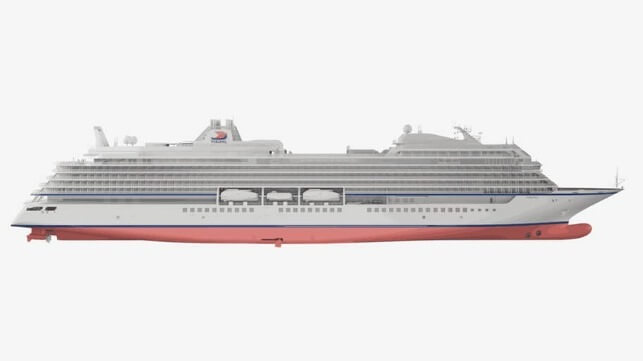Viking Unveils World's First Hydrogen-Powered Cruise Ship in Italy
Key Ideas
- Viking and Fincantieri announce the development of the world's first hydrogen-powered cruise ship, Viking Libra, to operate with zero carbon emissions by 2026.
- The vessel will feature fuel cells generating up to six megawatts of power, utilizing PEM fuel cell technology to address hydrogen supply chain challenges.
- Viking's chairman expresses confidence in hydrogen as a true zero-emission solution, highlighting the investment in hydrogen as a step towards a sustainable future for the cruise industry.
- Fincantieri CEO emphasizes the company's commitment to driving innovation and widespread adoption of hydrogen technology through the integration of cutting-edge solutions.
Fincantieri and Viking have unveiled plans for the world's first hydrogen-powered cruise ship, the Viking Libra, currently under construction at the Ancona shipyard in Italy. This innovative vessel, set to be completed by the end of 2026, marks a significant milestone in the cruise industry's shift towards sustainable operations. With a focus on reducing carbon emissions, the Viking Libra will leverage hydrogen fuel cells to power its propulsion and auxiliary systems, providing a cleaner alternative to traditional fossil fuels. The utilization of PEM fuel cell technology, supplied by Fincantieri's subsidiary Isotta Fraschini, aims to overcome challenges in hydrogen bunkering through a containerized fuel storage system. Viking's chairman, Torsten Hagen, expressed optimism about the future of hydrogen as an environmentally friendly solution for cruise ships, highlighting the company's dedication to investing in sustainable practices. The announcement also included plans for a follow-on vessel, Viking Astrea, and a multi-vessel contract between Fincantieri and Viking to further integrate hydrogen technology into future cruise ship designs. Fincantieri's CEO, Pierroberto Folgiero, emphasized the importance of innovation and supply chain evolution in driving the adoption of hydrogen across the maritime industry, positioning hydrogen as a key component in the industry's transition towards greener operations.
